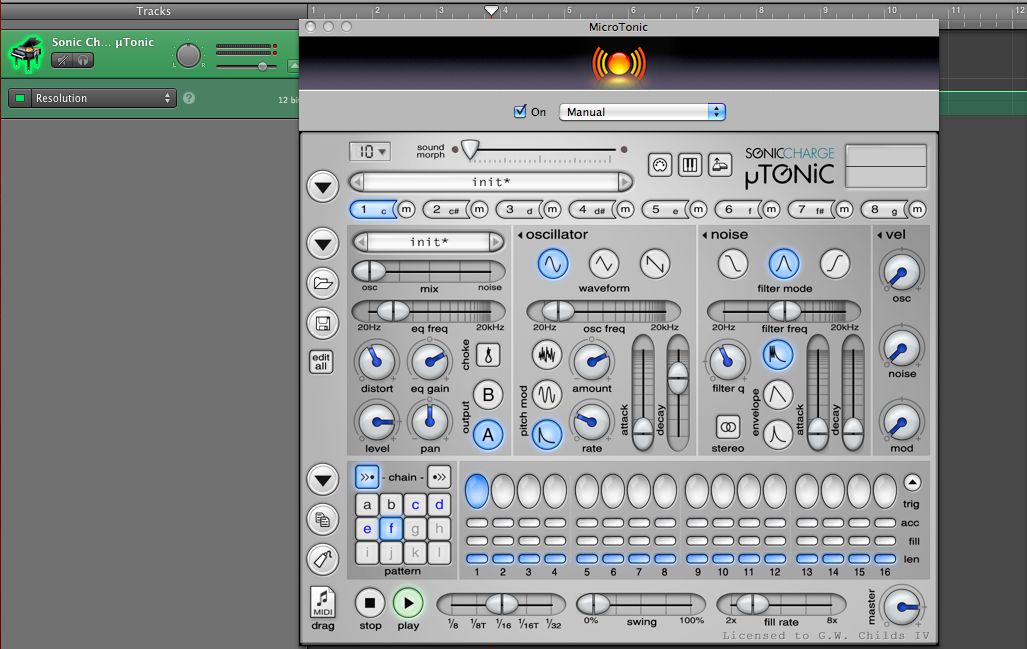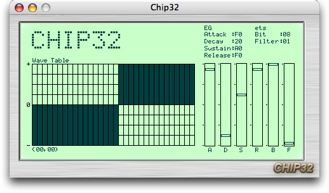Hello, I am using GarageBand 3 and would like to modify a song I downloaded from the internet. However, when I drag the song from iTunes to GarageBand, a pop-up notification alerts me that the file (.wav) has an '8 bit format and cannot be used!' I've never used GarageBand for iOS. But on my Mac there is a built in plug in called bitcrusher under the distortion category. It will make any instrument you want to be 8 bit sounding. Hands-on with GarageBand for iPhone: 8-track studio in your pocket. Given that, it is a bit of a wonder Apple was able to jam a useful UI into the 3.5' screen used on the iPhone and iPod touch.
This 8-Bit error is caused by faulty settings within the 'm4a' sample or effect media files within the Garageband 11 song. The 8-bit error was brought to my attention by a user of my Garageband 11 Mac To iPad + Mini iPad File Converter and the error messages and quite unequivocal as can be seen from the iPad screen dumps below. I was having trouble trying to figure out how to use the Magical 8bit Plug in GarageBand 10 and noticed other people having the same problem. I figured it ou.
When it comes to gaming, one of the greatest feelings is sitting crouched in a bush, waiting for just the right moment to line up your crosshairs on an opponent’s head, only to successfully pick them off across the map using only a single, glorious shot, all the while remaining undetected. The sheer success of the FPS speaks volumes to this, as it’s proven time and time again, pulling the trigger is a lot more fun than telling someone else to fire. This has resulted in RTS style games made popular by the Command & Conquer series becoming all but extinct, save for the occasional release. Whether it’s the often complex nature of the genre or the fact that the controls are PTSD inducing, the RTS genre has never been something that was easy to pick up and play on a console. Tooth and Tail certainly did a great job of putting this notion aside, and now 8-Bit Armies looks to do the same.
The title says everything you need to know about the storyline. You’ll take on the leadership role of a small, ever growing team of blocky, retro inspired army men that must work their way across a battlefield with nothing but you to guide them, taking out the enemy forces or structures along the way. While games such as the story heavy Halo Wars force feed gamers an overly complex narrative, this jumps straight into the action without providing a reason behind the war. I found this to be quite refreshing, as I am not one to question a fictional armies moral standing or what hot topic issues they stand for or against; I enter virtual worlds to rack up an imaginary body count.
If you’re new to the genre, the gameplay is pretty straight forward; your base is established on a randomly set point on the map, and you are required to work your way across it while managing teams and resources. Hidden pathways will unearth small checkpoints or allow you to setup smaller bases en route to your main objective. As you progress through each encounter, you’ll earn new assets, including vehicles which make the journey from point A to B and so forth a little more manageable.
What the game lacks in story it makes up for in content, with a huge number of scenarios for two different teams, each with their own unique equipment and objectives. You’ll find yourself guiding your squads through harsh landscapes, taking down enemy forces, destroying key objectives, and establishing bases on the playing field. This is normally where frustration comes into play, as controlling individual squads is normally way more difficult than it should be on consoles. This pulls off the mechanic flawlessly, allowing you to group up single units with a press of the button and selecting where you want them to go or whom to target with just as much ease.
Not being limited to a single player venture, the game can be played cooperatively or in PvP, as well as against the AI in a skirmish mode in the event you’re like me, and typically fail at the RTS genre. While I was promptly put in my place by the online opponents that I was matched with, the AI is very forgiving, with a range of difficulties that allow you to set the difficulty right where you want it, leaving the game as an accessible option for both newcomers and veterans of the genre.
While I am normally a huge fan of the retro look, I found that it didn’t do much for this game in terms of the blocky, 8-bit inspired presentation. While it does look and sound like a retro game, it feels like it was developed for the newer consoles, failing to trigger that nostalgic feeling that similar visual styles would aim for. The game barely looks like an improvement upon the original Command & Conquer releases and due to the basic design, results in a number of assets blending into the environment.
Going back to the PS1 days, I’ve never been a huge fan of RTS games, but 8-Bit Armies is a step in the right direction. With its responsive and simplistic controls in addition to an overly forgiving AI, the title makes some impressive strides towards making the genre relevant again, even if the visuals don’t pack as impressive of a punch as they could.
7 out of 10
Pros

- Accessible Controls and Gameplay
- Lengthy Campaign
- Low Emphasis on Resource Management
Cons


- Lackluster Presentation
- Some Assets Get Lost Within The Game World
8-Bit Armies was developed by Petroglyph and published Soedesco. It was released on PC in 2016 for $14.99, as well as PS4 and X1 September 21st, 2018 for $29.99. The game was provided to us for review on X1. If you’d like to see more of 8-Bit Armies, check out the official site.
Here at GBG we use a rating method that you are more than likely familiar with – a scale of 1 to 10. For clarification, we intend on using the entire scale: 1-4 is something you should probably avoid paying for; 5-7 is something that is worth playing, but probably not at full price; 8-10 is a great title that you can feel confident about buying. If you have any questions or comments about how we rate a game, please let us know.
Garageband 8 Bit Iphone

Garageband 8 Bit Format Not Supported
